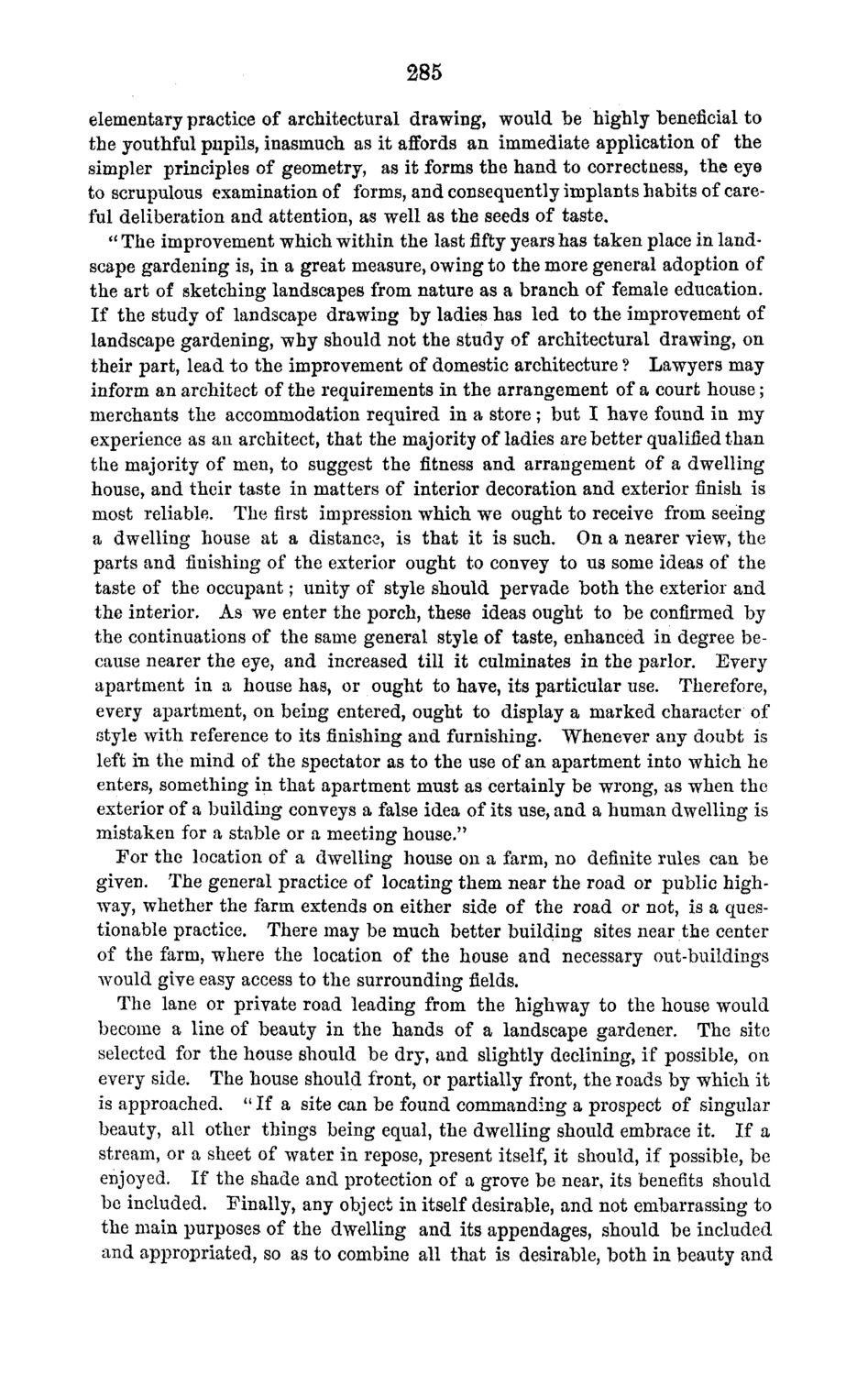| |
| |
Caption: Board of Trustees Minutes - 1870
This is a reduced-resolution page image for fast online browsing.

EXTRACTED TEXT FROM PAGE:
285 elementary practice of architectural drawing, would be highly beneficial to the youthful pupils, inasmuch as it affords an immediate application of the simpler principles of geometry, as it forms the hand to correctness, the eye to scrupulous examination of forms, and consequently implants habits of careful deliberation and attention, as well as the seeds of taste. "The improvement which within the last fifty years has taken place in landscape gardening is, in a great measure, owing to the more general adoption of the art of sketching landscapes from nature as a branch of female education. If the study of landscape drawing by ladies has led to the improvement of landscape gardening, why should not the study of architectural drawing, on their part, lead to the improvement of domestic architecture ? Lawyers may inform an architect of the requirements in the arrangement of a court house; merchants the accommodation required in a store; but I have found in my experience as an architect, that the majority of ladies are better qualified than the majority of men, to suggest the fitness and arrangement of a dwelling house, and their taste in matters of interior decoration and exterior finish is most reliable. The first impression which we ought to receive from seeing a dwelling house at a distance, is that it is such. On a nearer view, the parts and finishing of the exterior ought to convey to us some ideas of the taste of the occupant; unity of style should pervade both the exterior and the interior. As we enter the porch, these ideas ought to be confirmed by the continuations of the same general style of taste, enhanced in degree because nearer the eye, and increased till it culminates in the parlor. Every apartment in a house has, or ought to have, its particular use. Therefore, every apartment, on being entered, ought to display a marked character of style with reference to its finishing and furnishing. Whenever any doubt is left in the mind of the spectator as to the use of an apartment into which he enters, something in that apartment must as certainly be wrong, as when the exterior of a building conveys a false idea of its use, and a human dwelling is mistaken for a stable or a meeting house." For the location of a dwelling house on a farm, no definite rules can be given. The general practice of locating them near the road or public highway, whether the farm extends on either side of the road or not, is a questionable practice. There may be much better building sites near the center of the farm, where the location of the house and necessary out-buildings would give easy access to the surrounding fields. The lane or private road leading from the highway to the house would become a line of beauty in the hands of a landscape gardener. The site selected for the house should be dry, and slightly declining, if possible, on every side. The house should front, or partially front, the roads by which it is approached. " If a site can be found commanding a prospect of singular beauty, all other things being equal, the dwelling should embrace it. If a stream, or a sheet of water in repose, present itself, it should, if possible, be enjoyed. If the shade and protection of a grove be near, its benefits should be included. Finally, any object in itself desirable, and not embarrassing to the main purposes of the dwelling and its appendages, should be included and appropriated, so as to combine all that is desirable, both in beauty and
| |